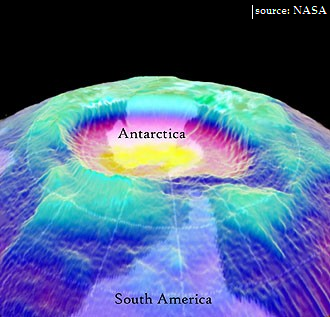A study has proved that an international protocol to limit one form of pollution has successfully averted environmental consquence, says S.Ananthanarayanan.
Great efforts are being made to see that COP21, the international meeting to decide a course of action to manage global warming, at Paris later this year comes up with something concrete. As earlier conclaves have not had perceptible results the earnest hope is that the performance is a lot better this time. In the context, the finding that the Montreal Protocols on substances that deplete the ozone layer has led to a measureable reduction of the damage done is heartening and may suggest how we need to go about it in Paris.
Great efforts are being made to see that COP21, the international meeting to decide a course of action to manage global warming, at Paris later this year comes up with something concrete. As earlier conclaves have not had perceptible results the earnest hope is that the performance is a lot better this time. In the context, the finding that the Montreal Protocols on substances that deplete the ozone layer has led to a measureable reduction of the damage done is heartening and may suggest how we need to go about it in Paris.
But these fears may be allayed in part, by the review by a group of scientists to say that further to an intergovernmental prottocol of 1978, there has been positive slowing of the build-up of pollutants that cause depletion of the ozone layer in the atmosphere, with the ‘ozone hole’ in the Antarctic expected to disappear by 2050. M.P. Chipperfield, S.S. Dhomse, W. Feng, R.L. McKenzie, G.J.M. Velders and J.A. Pyle, from the University of Leeds, Cambridge, the Netherlands and New Zealand, describe in the journal, Nature Communications, that modeling atmospheric chemistry shows that the protocol has prevented a 40% increase in the depletion over the Antarctic, doubling over lower latitudes in the Northern Hemisphere and serious damage over the Arctic circle.
Ozone depletion
Ozone gas is a form of oxygen which builds up at higher altitudes and protects the earth by absorbing much of the Untra Violet radiation that comes from the sun. The oxygen atom has an incomplete outer electron shell and tends to combine with other atoms. Oxygen gas consists of molecules made up of two oxygen atoms that share their outer shell electrons and form a stable unit. At higher altitudes, energetic photons of U V light split oxygen molecules into the component atoms. Lone atoms represent a higher energy state and they need to form bonds for stability. This, they are able to with other oxygen molecules, to form a three atom molecule of ozone.The ozone molecules again, readily absorb UV light and release ‘lone’ oxygen atoms, which then again combine with oxygen molecules to form ozone, and so on. The cycle keeps going till there are ‘recombinations, which end up with normal oxygen molecues, the state of the lowest energy.
There is thus a process of ozone generation, which starts with UV light splitting an oxygen molecule and then reduction of ozone by recombination, leading to a balance of net ozone content at higher altitudes. This ozone content keeps up a pace of absorbing UV radiation and keeping it away from reaching the surface of the earth. This proportion of oxygen in the atomosphere and the action of blocking UV radiation by ozone is great protection that allows life forms, including humans to prosper on the surface of the earth.

Ozone and Health
The ozone layer and containment of UV radiation at the surface of the earth have apparently been present for thousands of years while life forms have evolved. In fact, it is considered that low levels of UV radiation may been a precondition for the origin of life itself. Reduction of ozone and hence increase in UV radiation has serious health implications, one being the increase in incidence of skin cancer. Ths present study cites an estimate of two million cases of skin cancer avoided by 2030 as a result of checking CFC use.
This discovery of the bit of science, that components in air are changing way up in rarefied stratoshpere, appears to have been presented to the world in metaphor, like ‘ozone shield’ and ‘ozone hole’, that is friendly to the lay-person, and the world was fast to react.The Montreal Protocol, which set up a time-table for stopping the use of CFCs, was signed in 1978 and consumers stopped using aerosol sprays, the sales dropped by 50%, even before the protocol. The pace of reducing CFC use has been monitored and reviewed and as of 2013, the researchers in Nature Communications report that the damage is fast getting undone, as also far depletion could have progressed but for the protocol.
Consumer control
In contrast is the sluggish reaction of the world to the elaborately publicised information about greenhouse gasses and global warming. The success of the CFC control initiatives could hence well be studied for adapting for climate change. One helpful factor seems to be that consumers of procucts tha contain CFCs had direct control over consuming those products and there was incentive for manufacturers to shift change technology. Such control may be difficult with GHGs, but consumer education to seek sustainable living may go a long way to inducing governments and the industry to change course.
------------------------------------------------------------------------------------------